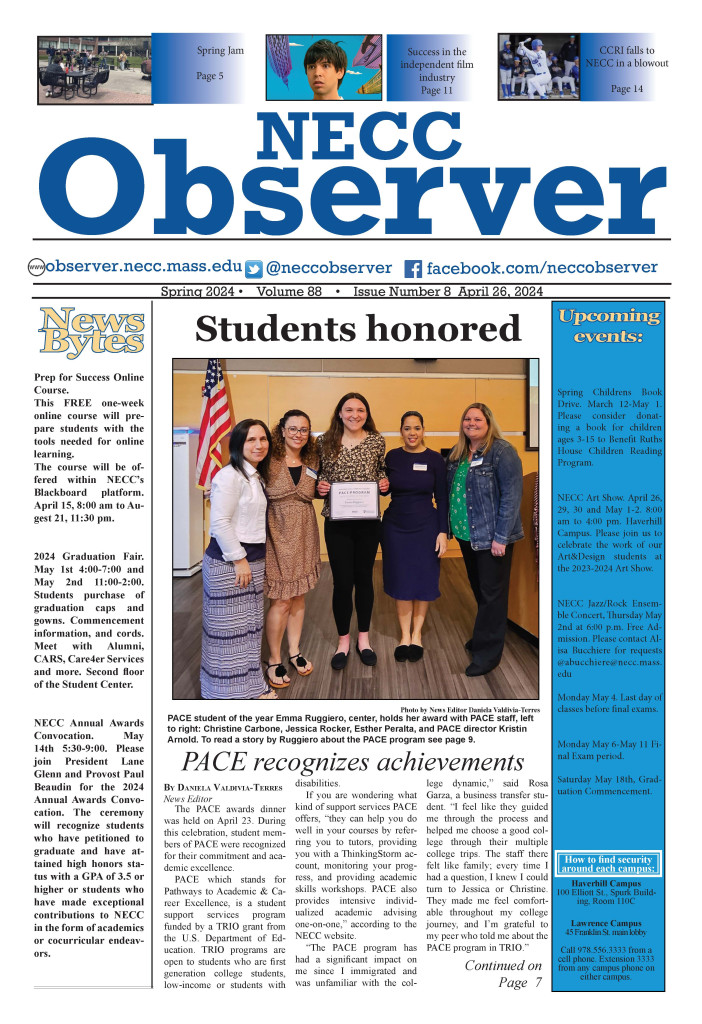On Friday, Nov. 13, Professors Lis Espinoza and Tom Greene gave a presentation called “Zombie Talk: The Popularity of Ghouls and Zombies in Film, Race and Gender.”
Dimly lit, Lecture Hall A welcomed zombie enthusiasts by projecting the sounds of “Zombie” (the popular ’90s, song by The Cranberries) and featured professional, special effects makeup artist, Holly Recupero of Salem, Mass., creating a variety of zombie-esque looks for those who attended.
“Ironically, I’m afraid of zombies,” said Espinoza, who introduced the presentation.
Despite her fear, her curiosity drove her to find out where the first zombies appeared in pop culture.
One of the first films discussed by Espinoza and Greene was “White Zombie” (1932) by Garnett Weston. Starring Béla Lugosi (1882-1956) the actor who played the original Count Dracula in 1931, the film featured a re-animated corpse and later became the inspiration for a band of the same name.
“White Zombie,” the band co-founded in 1985 by Haverhill native Rob Cummings, horror enthusiast, eventually led to his solo career and new band called “Rob Zombie.”
After legally changing his last name from Cummings to Zombie, he made his directorial debut in 2003 with the film “House of 1000 Corpses.”
As we journeyed through decades of films, one of the most influential examples of zombie takeover discussed was 1968’s “Night of the Living Dead,” written by George Romero and John Russo. That seminal classic has inspired artists of all walks of life from film to paintings and music videos.
Directed by John Landis, the music video for “Thriller” by Michael Jackson was MTV’s first world premier video.
Debuted in 1983, “Thriller” was 13 minutes of pure zombie and werewolf suspense and featured master choreography for a dance number that is still performed by professional and amateur dancers today.
The presentation continued with Espinoza and Greene discussing the current TV show created by Frank Darabont, “The Walking Dead.”
Since its debut in 2010, fans’ voracious appetite for the horror-drama has showed no signs of slowing.
“What is it about this version of zombies that makes it more popular?” said Greene, exploring his idea that zombies are a political connection with rampant consumerism and the end of the world or apocalypse.
Greene’s other talk, entitled “Why are Vampires Sexy?,” examines another pop culture icon in the horror world: that of the vampire.
Whether they are referred to as undead, walkers, living dead or zombies these sub-human creatures have survived and frightened generations of fans and are a prominent part of pop-culture today.

